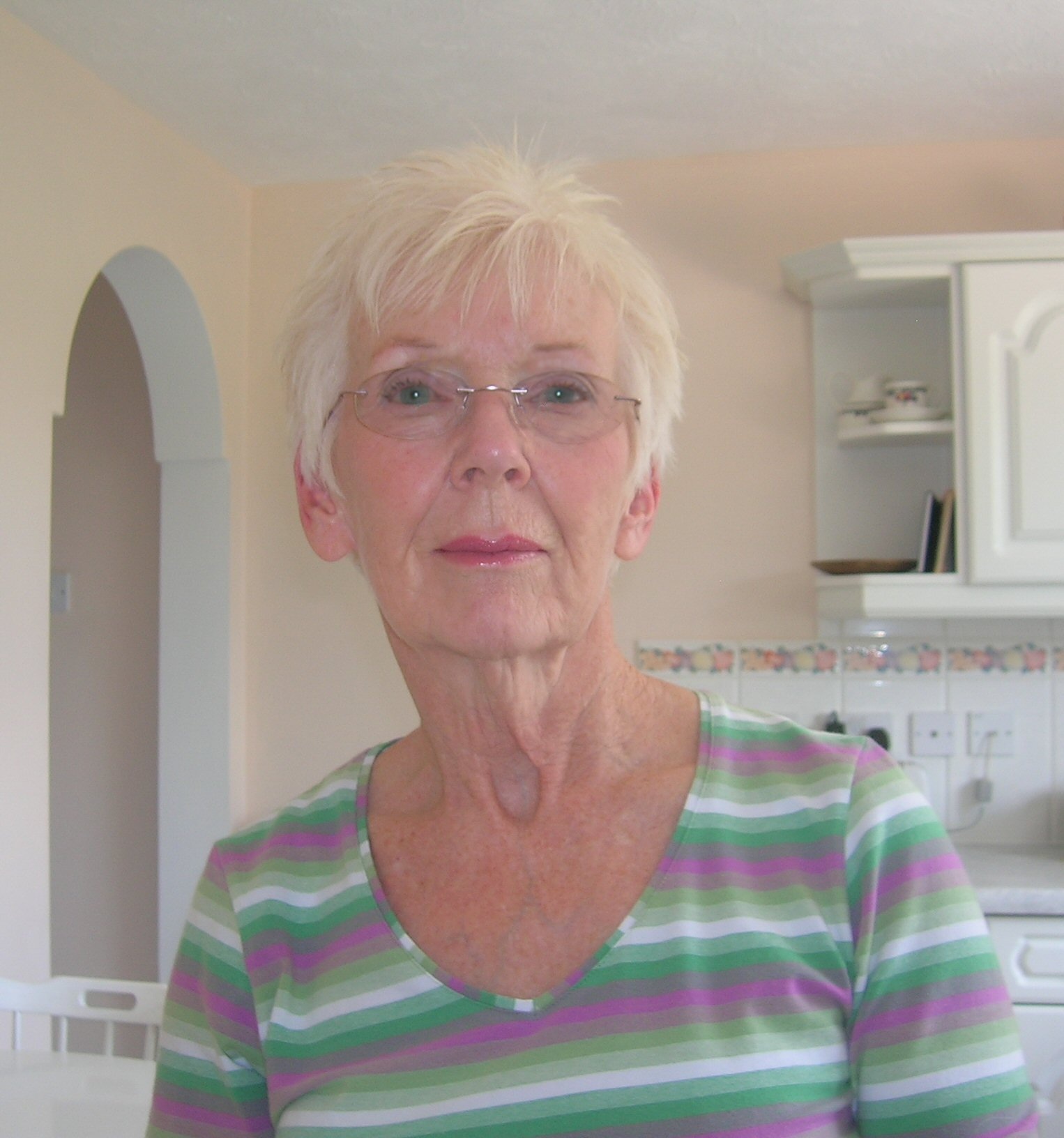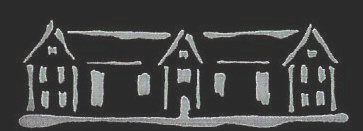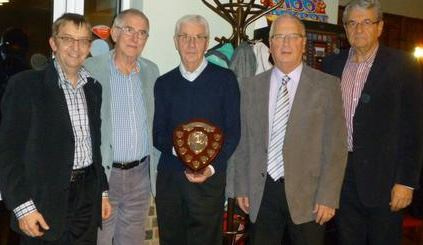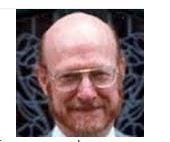About Me

Pauline Mobey
I first became interested in Littlecote in 2007 through a friend who was constructing a guided tour of the historic house. Whilst helping her, I found her passion for Littlecote infectious, and started to find out more about the people who had lived there. One of my passions is genealogy and I soon found myself putting together a family tree for all those with Littlecote connections. The tree became the basis of my research and now has over twelve thousand people in it!
Ultimately I became a tour guide too, giving guided tours of the historic house to guests of Warner Leisure Hotels ( http://www.warnerleisurehotels.co.uk/Littlecote) who own the house and hotel. Through the tours and my research, I met many people who convinced me that I should commit my knowledge to paper, hence my book "Littlecote Lives and Legends".
http://www.warnerleisurehotels.co.uk/Littlecote) who own the house and hotel. Through the tours and my research, I met many people who convinced me that I should commit my knowledge to paper, hence my book "Littlecote Lives and Legends".
One very rewarding thing I have been able to do is to help people who believe they have Littlecote connections to understand exactly how they are related to the families who lived there. I often get enquiries from people who have had handed down to them through generations the belief that they are related, for example, to Sir John Popham of Littlecote, Lord Chief Justice of England to Queen Elizabeth I. In July 2010 we had a marvellous reunion of some of his direct descendants at Littlecote, and repeated the experience in July 2013 with another group of descendants, most of whom were visiting the house for the first time.
Other Stuff
In November 2014, at the request of the Chairman of Chilton Foliat Parochial Church Council, I wrote a series of short articles for "Whitton Ways", the magazine of the Whitton Benefice, which covers the churches of Chilton Foliat, Axford, Froxfield, Ramsbury and Baydon. Entitled "Chilton Connections", they are intended to illustrate the many and various links between Littlecote House and the nearby village. They were published on a monthly basis, but I reproduce all twelve here for anyone who might find them of interest.
CHILTON CONNECTIONS
Quote from 2014: “Our lovely church is badly in need of repairs to the roof” – referring to St Mary’s, of course. Historians will hear the sound of bells ringing, and not just the church bells. In 1523, Queen Katherine of Aragon wrote to Sir Edward Darrell of Littlecote instructing him to cut down three oak trees for the repair of the church roof. Edward, great-grandfather of “Wild” William Darrell, was Vice-Chamberlain and Keeper of the Queen’s Royal Parks at Chilton Foliat. Katherine’s letter to him, which still exists in the National Archives, said that the trees were for “the reparacon of the Churche of Chilton Folyat whiche is in grete Ruyne and Decay”. Those oak timbers still form the roof, although the beams are covered by later oak timbering. Katherine was very generous with her trees: in 1530 she gave Sir Edward Darrell another ten oaks, and it is believed that these were employed in the construction of the famous Jerusalem staircase at Littlecote. Running from the Cromwellian guardroom to the attics, those stairs were the access for Colonel Alexander Popham’s garrison, billeted in the attics during the Civil War. Despite nearly 500 years of heavy use, they show little sign of wear and are still as solid today as they were when they were first laid.
o-o-o-o-o-o
The Pophams of Littlecote will be forever linked to Chilton Foliat. St Mary’s was their Parish church; three served as Rector and many of them were buried there. Memorials abound, but one of the most poignant is the beautiful marble statue of a tiny baby to be found on the window sill. He was Francis Hugh Leyborne Popham, the first-born son and heir of Francis Leyborne Popham and his wife Elizabeth. Baby Francis died of pneumonia in 1861 aged five months. Amazingly, the statue was sculpted by his mother. An article in the Bristol Mercury in 1863 says "A beautiful white marble monument, consisting of the figure of an infant reclining on a pillow, has lately been placed in the private chapel at Littlecote …. It may be interesting to add that this monument was executed by his mother, Mrs Francis Popham, from recollection, and those who have seen it state that it is a work of unusual merit, and an excellent likeness". The marble statue, inscribed “E Popham fecit” was moved to St Mary’s at some point, but in the chapel at Littlecote is a plaster version, presumably used as a template for the real thing.
o-o-o-o-o-o
The story of Anne Boleyn and her marriage to King Henry VIII is a familiar part of British history, as is her subsequent trial and execution by a French swordsman on Tower Green. Perhaps less well-known is the story of Anne’s older sister Mary, although her affair with King Henry, her life at court and her subsequent fate have been told in books and films such as “The Other Boleyn Girl”. Dubbed “the great and infamous whore”, Mary preceded her sister in Henry’s bed, although at the time she was newly married to William Carey, rising courtier and favourite of the King. William was the son of Thomas Carey of Chilton Foliat; their manor house lay to the west of St Mary’s Church, and Robert Carey had been Rector there in the time of Henry IV. Mary’s son Henry Carey, born 1526, was widely thought to have been the illegitimate son of the King. He became a prominent MP, was knighted in 1558 and created 1st Baron Hunsdon by his cousin Queen Elizabeth I in 1559. Henry Carey is buried in Westminster Abbey.
o-o-o-o-o-o
An amazing find in the organ loft of St Mary's church has recently shed light on a Popham mystery. Sir John Popham's male line failed in 1779 with the death, childless, of Francis Popham. When he died he left the Popham estates to his wife Dorothy. She survived for another 18 years, but in her will she left everything, as a tenant for life, to "Francis Popham, the reputed son of my late husband". This illegitimate son did not marry but produced three illegitimate childen of his own, two of them sons. They in turn produced huge families of Pophams, all related by blood to Sir John Popham but unable to inherit. One of those was James Pain Popham, born in Great Coggeshall, Essex, to a lacemaker. James, who died in 1930, had asked to be buried in Chilton Foliat along with many other Pophams, and his daughter Evangeline wanted an inscription on his tombstone which read "great-grandson of Francis Popham of Littlecote". In a brown envelope in the organ loft was a sheaf of correspondence between her, the then Rector, Rev W H Pelham, Hugh Leyborne Popham, the Archdeacon of Wiltshire and the chaplain to the Bishop of Salisbury. None of the clergy would allow the inscription unless she could prove her connection - which was impossible given that the reputed son was born secretly in France! They called her a "tiresome upstart" and eventually her quest failed. The brown envelope is entitled, in the hand of Rev Pelham, "Amusing Correspondence re Inscription on the Tombstone of James Popham". I am sure Evangeline found it less than hilarious, and the grave went unmarked.
o-o-o-o-o-o
One of the several Pophams to serve as Rector of Chilton Foliat was Edward Popham DD, born at Littlecote in 1738 to Edward Popham MP and Rebecca Huddon. Edward was their third child: his elder brother Francis was heir to the Popham estates. According to gossip at the time, Edward and his father were estranged on account of the son marrying whilst he was up at Oxford against his father’s wishes. So great was the rift that his father is reported as actively preventing his son from taking up the family living at Chilton, despite the fact that the incumbent holding the position pending Edward’s coming of age very honourably offered to resign. His father declared that if the incumbent resigned, the living would go to some other person – his son should never have it. Edward was also at odds with his brother Francis, who refused to allow him to see his father on his death-bed for fear that it might upset the dying man. Francis continued to deny Edward the curacy after the death of their father in 1772, despite many entreaties, and it was not until Francis himself died in 1779 that his widow Dorothy agreed that Edward, then Vicar of Lacock, should take up the post and move into the Chilton Foliat rectory, where he lived with his wife Ann until his death in 1815.
o-o-o-o-o-o
You simply can't ignore it – the Littlecote legend just won't go away. The story of Mother Barnes the blindfolded midwife and the baby thrown on to the fire has been talked about locally ever since the midwife made her deposition to magistrate Anthony Bridges in 1578. Recently a visitor from Canada who had been brought up in Chilton Foliat donated a very interesting package to Littlecote. It included a very old hand-written copy (with transcript) of "The Blindfolded Midwife, a Tale of Mystery and Horror; and the Littlecote Ghost (a Poem)". By an unknown author, probably Victorian, it is a description of the house and an outline of the story, followed by a 67-stanza poem which includes the immortal lines:
"
And fame reports, the lady comes
With babe of fire at dead of night,
But harmless to the innocent
They come to see that all is right".
Intriguingly, the fragile hand-written copy, dated 1912 and sent to a Mr New in Chilton Foliat, was contained in an envelope bearing a penny red postage stamp franked "Great Shefford" - the home of Mother Barnes!!
o-o-o-o-o-o
Residents of a certain age will remember the role played by the Kennet Valley during the last war. Littlecote House in particular was used as the regimental headquarters of the 506th Parachute Infantry Regiment, part of the US 101st Airborne Division, under the command of Colonel Robert F Sink. Company 'E' of this regiment became famous following the publication of the book 'Band of Brothers' by Stephen Ambrose, subsequently filmed as a BBC mini-series. The Kennet Valley at War Trust, whose aim is to “educate and inform people about the history of the Kennet Valley during the Second World War”, maintain a small museum at Littlecote. In 2013, a memorial stone to British and US soldiers stationed there was erected on the south lawns, and more recently the Trust has received £30,000 from the Heritage Lottery Fund to digitise a collection of World War Two artefacts as part of a community history project. But who was Stephen Ambrose? A well- known and sometimes controversial American historian and author, often accused of plagiarism. But visitors to Chilton Foliat may wonder why he was buried in the churchyard there. Check the dates – not him but his great-great-grandfather! Author Stephen Edward Ambrose (1936-2002), born in Lovington, Illinois and died in St Louis, Mississippi, had a personal link to Littlecote. His ancestor Stephen Ambrose (1786-1849) was born in Chilton Foliat, and worked on the estate for many years, latterly as Bailiff. His impressive tombstone in the churchyard proves it.
o-o-o-o-o-o-o
“Littlecote House is reputedly the third most haunted house in Britain” – how many times have I intoned those words? The first two, apparently, are Chingle Hall near Preston, and Chillingham Castle near Alnwick in Northumberland. How this highly subjective index came to be measured has not been explained! But if I had a pound for every time someone has told me of a ghostly sighting or sent me a ghostly picture, I’d be doing very nicely, thank you. The latest report comes from a gentleman who was born in the flat over the stables at Littlecote in the 1950s and went to school in Chilton Foliat. His father was employed as a painter and decorator by the Wills family, tobacco manufacturers well-known for their Woodbine brand, who owned Littlecote from 1927 to 1985. In the chapel is a wonderful old organ, once water-powered but now converted to electricity, which the Wills family had reportedly brought down from Taymouth Castle in Scotland. One day, this gentleman’s father was busy painting the chapel walls when he heard the organ being played. Knowing Major George Wills to be a bit of a prankster, he went to investigate, but found that he was completely alone. Is it possible for an organ to play itself? Or was there a ghostly hand on the stops and feet on the pedals? His son has never forgotten the story.
o-o-o-o-o-o-o
Family bibles are often great sources of information for genealogists. They were used by many families to record births, marriages and deaths and sometimes contain information not available elsewhere. A Popham bible dated 1770 was recently presented to St Mary's church at Chilton Foliat. The bible was owned by "The General" – Lieutenant-General Edward William Leyborne Popham, the first to bear that surname, having added the name Popham to his own in order to inherit the estates in 1804. He married Elizabeth Andrew and they were responsible for the 1810 building and refurbishments at Littlecote. They recorded the births of their eight children in the bible - not just the date and place, but also the time of day or night and in many cases details of the subsequent baptism. These are followed by the six children of the General's second son Francis Leyborne Popham, his elder brother Edward William never having married. These include the birth in London of baby Francis Hugh who died aged 5 months and whose lovely statue, carved by his mother, stands on the window sill in St Mary’s church, the rough first cast being in the chapel at Littlecote. And finally, the children of Francis's successor Hugh Francis Arthur, whose daughter Elizabeth (Lloyd), known as Libbet lived in Ramsbury and is buried in the churchyard. Libbet passed the bible to her daughter Susan and it was she who presented it to the church.
o-o-o-o-o-o-o
Having spent many long hours poring over the Chilton Foliat Parish Registers, I feel I know them very well. It was Thomas Cromwell who decreed in 1538 that every parish church should henceforth record each baptism, marriage and burial in a special register – failure to do so would result in a fine. This book was to be kept in a "sure coffer" with two locks (one key for the vicar, the other for the wardens). The decree took some time to be fully accepted, but it is Cromwell we genealogists have to thank, and I do. Registers are no longer kept in churches – they suffered from damp, were sometimes stolen or mislaid, and eventually the county records offices took responsibility for them. Chilton was fortunate to have its registers painstakingly copied into modern books before they were removed to the Wiltshire Records Office, and those copies now reside in the vestry. The original registers have been transferred onto microfiche and can be viewed at the records office in Chippenham, as well as the typed and indexed transcripts produced by the Wiltshire Family History Society. But it is to the originals you must turn to get the full story. You will find, for example, the burial on 12 Oct 1739 of brothers Alexander and Edward Popham who “died within 30 hours one of ye other and were buryed both in the one grave". Edward is described as "of Bazedon" which left me puzzled for a very long time. Where was Bazedon? In fact, the brothers, who died unmarried aged 56 and 50, rented Bassett Down House in the parish of Lydiard Tregoze and it was there they died. Their brother George, as rector of Chilton Foliat, buried them.
o-o-o-o-o-o-o
The longest-serving Rector of Chilton Foliat was John Leyborne Popham. The family bible shows that he was "born at Littlecott in the County of Wilts Tuesday morning fifteen minutes before eight o'clock February the 19th 1811, died Sept 24 1872". The third son of Edward William Leyborne Popham and Elizabeth Andrew, he was educated at Harrow and Oxford, and was Rector from 1835 until his death, a total of 37 years. He married first Frances Sanders of Exeter by whom he had three daughters. After her death, he married Anne Meyrick, daughter of Edward Graves Meyrick, Vicar of Ramsbury, by whom he had three more daughters and two sons. A great supporter of the church, it is recorded that “since 1834 great alterations have been made in Chilton Church by the present Rector, the Rev. John Leyborne Popham, and it may now be considered one of the handsomest and most complete in the diocese of Salisbury.” In the Wiltshire History Centre are the Parish notebooks kept by him from 1846 until his death. He religiously (!) records every service, the names and numbers of worshippers, communions, some baptisms (with godparents), marriages and burials. The Popham family were regular attenders. In 1849 he held a service of thanksgiving for the "abatement of cholera". His father-in-law Rev Meyrick sometimes read prayers. John and Anne, who lived until 1910, are both buried in Chilton.
o-o-o-o-o-o-o
Alexander Popham, the son of Colonel Edward Popham and great grandson of Sir John Popham, was born completely deaf in 1648. Determined that her son should lead as normal a life as possible, his mother Anne hired two eminent scientists, Dr William Holder and Dr John Wallis, to teach him to speak. Both claimed success in what became a celebrated scientific controversy. A yellowing, leather-bound notebook dated 1662, found in the silver safe at Littlecote in 2008, seems to have settled the issue. William Holder first taught Alexander in 1659/60 and convinced a lot of people that he had been successful, claiming that Alexander could pronounce words “plainly and distinctly, with a good and graceful tone”. However, in 1662, John Wallis began teaching Alexander, who at that point was unable to speak at all. Wallis was a renowned mathematician and an expert linguist, but not a lot was known about his approach to teaching Alexander until the discovery of the notebook, which has been authenticated as being in Wallis’s handwriting. Thanks to him, Alexander became one of the first deaf mutes to speak and he lived a normal life as master of an estate in Bourton on the Hill, Gloucestershire. He married Brilliana Harley with whom he had a family of five healthy children. He died at Litlecote in 1708 and was buried in Chilton Foliat, where the parish records at St Mary’s show that they buried “Dumb Alexander Popham”.

![]()








